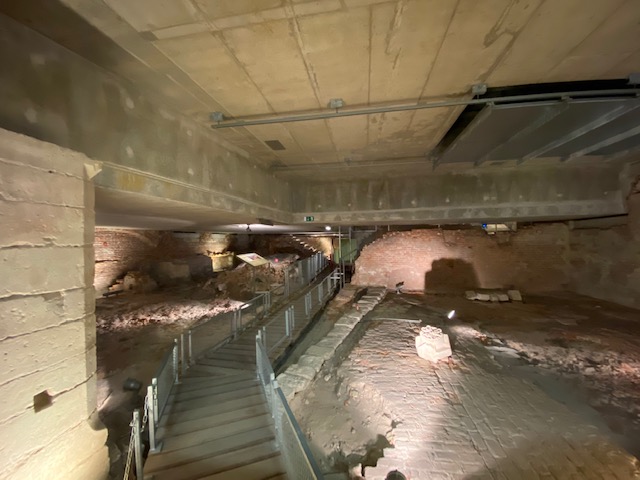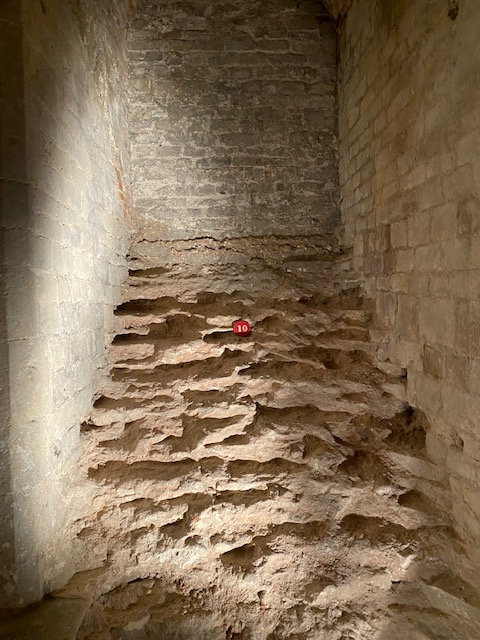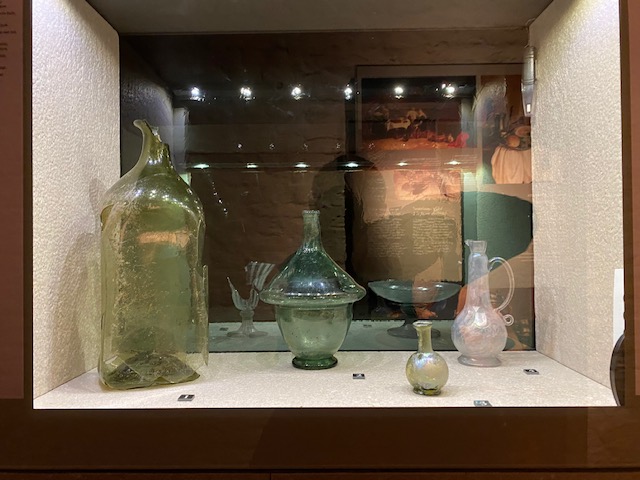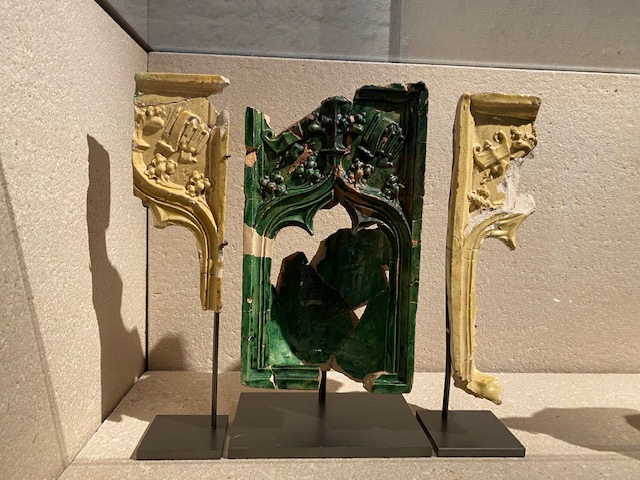The Coudenberg or Koudenberg is a hill in Brussels, the capital of Belgium. Nowadays it’s the location of the Church of St. James on Coudenberg, Royal Square (Place Royale, Koningsplein), the Constitutional Court, the Court of Audit, the Royal Museums of Fine Arts of Belgium, the Magritte Museum and institutions of the Brussels Capital Region. It used to be the location of the Palace of Coudenberg, of wich the archeological remains are open for visit.

For nearly 700 years, the Castle and then Palace of Coudenberg was the seat of government of the counts, dukes, archdukes, kings, emperors and governors, who from the 11th century until its destruction
in 1731, exerted their sovereignty over the area of the Duchy of Brabant, which became part of the Duchy of Burgundy, the Holy Roman Empire of the German Nation and Austria.
Grandeur
The palace is said to have been magnificent. The Aula Magna or Big Hall was built between 1452 and 1460. It was commissioned by the City of Brussels, under the instructions of the Duke of Brabant, Philip the Good, who also was Duke of Burgundy. The prestigious banqueting hall, the Aula Magna, was the scene of the major events of the Brussels Court : the abdication of Charles V in 1555, princely wedding feasts, as well as official receptions and balls.
Fire
But all was destructed in a fire on the 3rd of February 1731.
It is the 3rd of February 1731. “After a tiring day, the Governor-General of the Netherlands, Marie-Elisabeth of Austria, retires to her apartments in the palace of Brussels. Overcome with fatigue, the sister of the Emperor Charles VI fails to extinguish the candles. In the middle of the night, the drama unfolds. The fire quickly passes through wooden panelling into adjacent rooms”, the audioguide narrates compellingly.
“Throughout the night, the palace guards struggle to extinguish the blaze with the only means at their disposal at the time: leather buckets and water spray pumps. The middle class militia who gather quickly to help are pushed back in the confusion. Several minor fires had already occurred in the past, and just a few months earlier a chimney fire had been swiftly extinguished.”
“But this time, things are very different… The strict respect of protocol, formally forbidding access to the governor’s private apartments, prevents the fire fighters from attacking the source of the blaze. In addition, the wind is strong and icy conditions hamper water supplies.”
“The governor is saved by the intervention of a grenadier who dares to break down the doors of her apartments, but most of the palace disappears in flames. By early morning, the only buildings saved from the fire are the chapel, the stables, the library, the pages’ house and the kennels. The walls of the great banqueting hall, the Aula Magna, are still standing but the roof and the interior have been ravaged by the ferocity of the blaze.
“The findings of the ensuing investigation into the fire clear the governor of any responsibility and establish that the fire (unsurprisingly) had originated in the kitchens where a banquet was being prepared for the 5th of February 1731.”
You can visit the remains of the former palace of Brussels, but also of Hoogstraeten House, and Isabella Street (Rue Isabelle, Isabellastraat) all constitute the archaeological site of Coudenberg. They extend under Royal Square, Royal Street and some of the buildings around the square.
The visit

The visit starts in the BELvue Museum in Bellevue House right next to the Royal Palace of Brussels. There you go downstairs to visit the archeological site. There’s WiFi so you can listen to the audioguide on your phone or tablet. The texts are also typed, which is faster, more efficient and less annoying for others.
I was all alone by the way. Yep, corona.
The audioguide gives you plenty of information. Yes, you mainly see bricks, but still.
The visit ends in Hoogstraeten House where many artifacts are exhibited.
As a history buff, I enjoyed Coudenberg thouroghly. Allow 60 to 90 minutes.












100 Comments Add yours